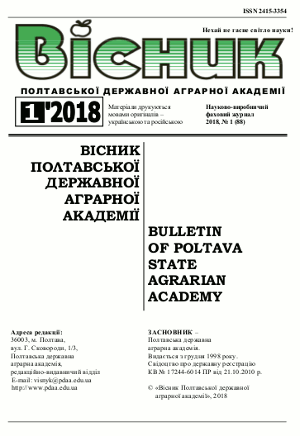Level of formation, variability and genetic connections of size of sort and selection lines of winter wheat
DOI:
https://doi.org/10.31210/visnyk2018.01.04Keywords:
winter wheat, sign, sowing terms, genetic correlationsAbstract
The article presents the results of an experiment on the study of the level of formation and variability of the «grain weight from ear» (M1) of winter wheat varieties and breeding lines (SL) and its genetic correlations with quantitative characteristics, depending on the year of cultivation and the timing of sowing. In the experiment, 3 sowing lines were used: early (September 1, SP-1), optimal (September 15, SP-2), late (October 1, SP-3). The task of the experiment was to investigate how the mass of grain from the ear is formed by the terms of sowing and years of research, as well as determine how the genetic links of the optimal seeding period are formed in relation to the early and late, and when genetic correlations are more clearly manifested between quantitative traits. In the course of the study, it was found that the highest level of the «mass of grain from the ear» was formed in 2015. It is determined that the sign «mass of grain from the ear» has a direct correlation with the structural elements such as: the number of grains from the ear, the mass of the colon with seeds and the weight of the plant, and less stable genetic relationships with other quantitative features, as in the years of research, and on sowing terms. It was investigated that the genetic links of the optimal seeding time of the sign «grain mass from the ear» with the generative and vegetative features have an approximate value to SP-1 and SP-3 and are formed with a slight difference.

 Creative Commons Attribution 4.0 International Licens
Creative Commons Attribution 4.0 International Licens